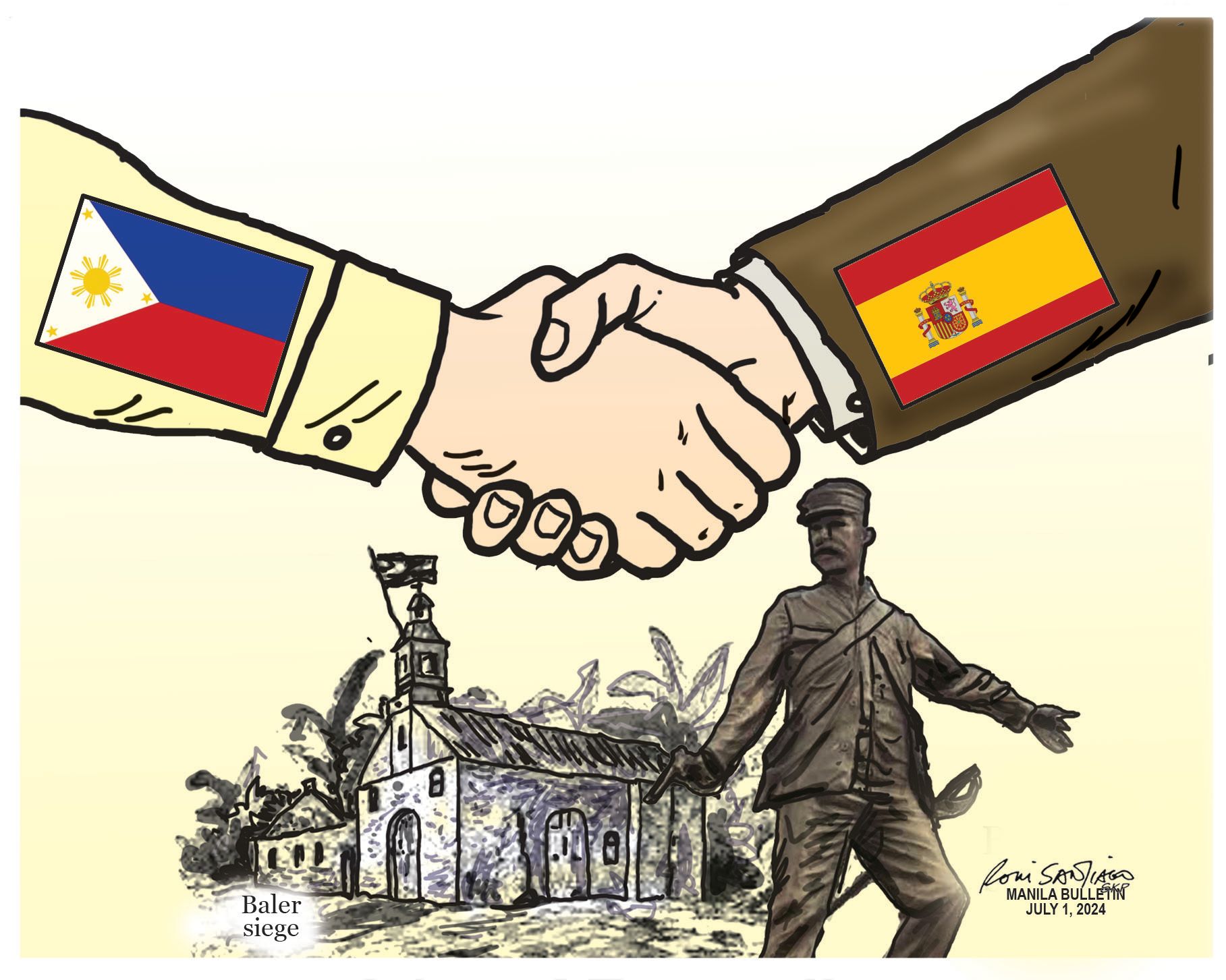Twin historic milestones marked today: PH-Spanish Friendship Day and start of Baler siege

Led by the National Historical Commission of the Philippines Chairperson Lisa Guerrero Nakpil, the nation marks today, July 1, 2024, two historic milestones: the 22nd Philippine-Spanish Friendship Day and the 126th anniversary of the start of the siege in Baler, Aurora.
Last June 26, an earlier commemoration was held in San Vicente, San Miguel, Bulacan in the house of Lieutenant Colonel Simon Tecson who played a significant role in securing the victory of Filipino armed forces in Baler. The story of the siege is remarkable. Thirty-three Spanish soldiers – commanded by Captain Enrique de las Morenas y Fossí and Lieutenant Saturnino Martín y Cerezo – barricaded themselves in Baler church for 11 long months, from July 1,1898 to June 2, 1899, unmindful that Spain had recognized Philippine independence by signing the treaty of Paris on December 10, 1898.
This latter event had been rendered moot and academic, too, by the proclamation of Philippine independence by President Emilio Aguinaldo in Kawit, Cavite on June 12, 1898. Fifteen days later, President Aguinaldo allowed safe passage for these soldiers, issuing a presidential decree commending their heroism, and ordering that they be treated as friends.
Congress enacted Republic Act No. 9187 creating the Philippine-Spanish Friendship Day to be observed on June 30 of every year. This commemoration reminds us that the simple act of benevolence of Filipinos in Baler then, paved the way for better relations between the Philippines and Spain today. The law states: “The 30th of June of each year is hereby declared as Philippine-Spanish Friendship Day to commemorate the cultural and historical ties, friendship and cooperation between the Philippines and Spain. It is hereby declared as a national special working holiday and a special non-working holiday in Aurora Province.”
Considering that Spanish colonization spanned more than three centuries, its socio-cultural impact was all-encompassing. The country was named after King Philip II of Spain by Ruy Lopez de Villalobos. Spanish was the lingua franca of government, education and trade, until the first half of the 20th century. Filipino names were Hispanicized. Today’s baby boomers were required to take four courses of Spanish as part of general education in college. The two most famous novels of our National Hero, Dr. Jose P. Rizal, namely, Noli Me Tangere an El Filibusterismo, were written in Spanish.
Not long after the Philippines gained independence from the United States on July 4, 1946, diplomatic relations were established between the Philippines and Spain in 1947. King Juan Carlos I became the first Spanish monarch to visit the Philippines in 1995 during the Ramos administration.
Established in 2003 during the Macapagal-Arroyo presidency, Philippine-Spanish Friendship Day observance has been low-key and subdued — and the twin events in San Miguel, Bulacan and Baler, remain as the focal points of the celebration.
Among Catholics, making a pilgrimage to the shrine of Our Lady of the Pillar in Zaragoza, and to the Santiago de Compostela Cathedral to venerate St. James the Greater (also known as Santiago de Compostela) after doing the Camino pilgrimage, a trek across mountain paths, plains and old towns covering hundreds of kilometers have also become popular. Lately, it has also been reported that affluent Filipinos are availing themselves of “non-lucrative” Spanish visas that allow dual citizenship.
These developments augur well for more robust Philippine-Spain friendship in the years ahead.